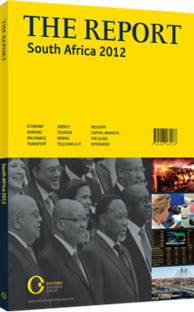OBG talks to Susan Shabangu, Minister of Mineral Resources

Interview: Susan Shabangu
How can greater beneficiation be achieved when it comes to the minerals sector?
SUSAN SHABANGU: Greater beneficiation in the mineral sector requires collaboration from all stakeholders in terms of, among other things, creating an enabling environment throughout the minerals and mining value chain. Such an environment should guarantee that there is availability of minerals to be beneficiated, appropriate skills are continuously developed and investment continues to flow into the sector.
Beneficiation is crucial to ensure that the country maximises the benefits from its mineral resources, especially in terms of economic development and employment potential. As such, in June 2011, the government approved a beneficiation strategy that identified the binding constraints towards downstream beneficiation in South Africa and the necessary intervention to address these. The intention is not to force miners to beneficiate but to address constraints for those firms wishing to enter into beneficiation or incumbents already in beneficiation and downstream fabrication. The focus is on increasing the level of strategic mineral beneficiation while expanding downstream opportunities and aligning these efforts with industrial development. To operationalise this strategy, the government is at present developing value chain beneficiation implementation plans for selected value chains. Beneficiation also involves cooperation with other state organs such as the Department of Trade and Industry, which is already providing support for manufacturing in a number of sectors. There will also be room for research institutions such as Mintek and the Council for Scientific and Industrial Research to harness innovation and research and development.
How can empowerment objectives for the mining industry optimally be reached?
SHABANGU: The empowerment objectives can be optimally reached through the effective implementation of the Mineral and Petroleum Resources Development Act (MPRDA) and the Mining Charter. However, I have to point out that ownership alone does not equal transformation and empowerment; all of the elements of the Mining Charter are imperative and should be implemented accordingly.
The equity element has a clear target of 26% to be achieved by 2014, which will be monitored through the charter’s annual compliance reports. Empowering people with relevant skills also plays a pivotal role in ensuring that people are empowered at all levels in the industry. In this regard appropriate skills development programmes should be put in place and integrated into the exploitation of the country’s mineral resources. Opportunities must also be made available for previously disadvantaged people, including women.
What concerns has the public raised in connection with mining and how are they being addressed?
SHABANGU: The key concerns from the public mainly have to do with community issues and the adverse impact of environmental degradation, which were not addressed by the previous minerals act. However, the MPRDA is an extensively researched piece of legislation that is designed to address socio-economic imperatives and sustainable development. The act promotes the concept of sustainable development in that it requires that social, economic and environmental factors are integrated in the planning of mines. Such an approach will require the development and implementation of appropriate social and labour plans as well as sustainable environmental management plans. In this way, most of the questions raised by communities will be addressed. However, as concerns are not static, the Department of Mineral Resources continuously engages with communities to listen to their concerns and issues relating to the mining sector. These consultations help us in addressing community questions as and when they arise. Some of these concerns may relate to historical activities. For example, the issue of acid mine drainage is a consequence of more than 100 years of mining.
You have reached the limit of premium articles you can view for free.
Choose from the options below to purchase print or digital editions of our Reports. You can also purchase a website subscription giving you unlimited access to all of our Reports online for 12 months.
If you have already purchased this Report or have a website subscription, please login to continue.

